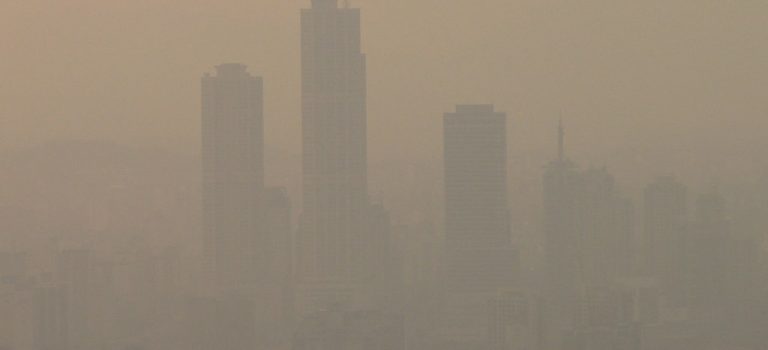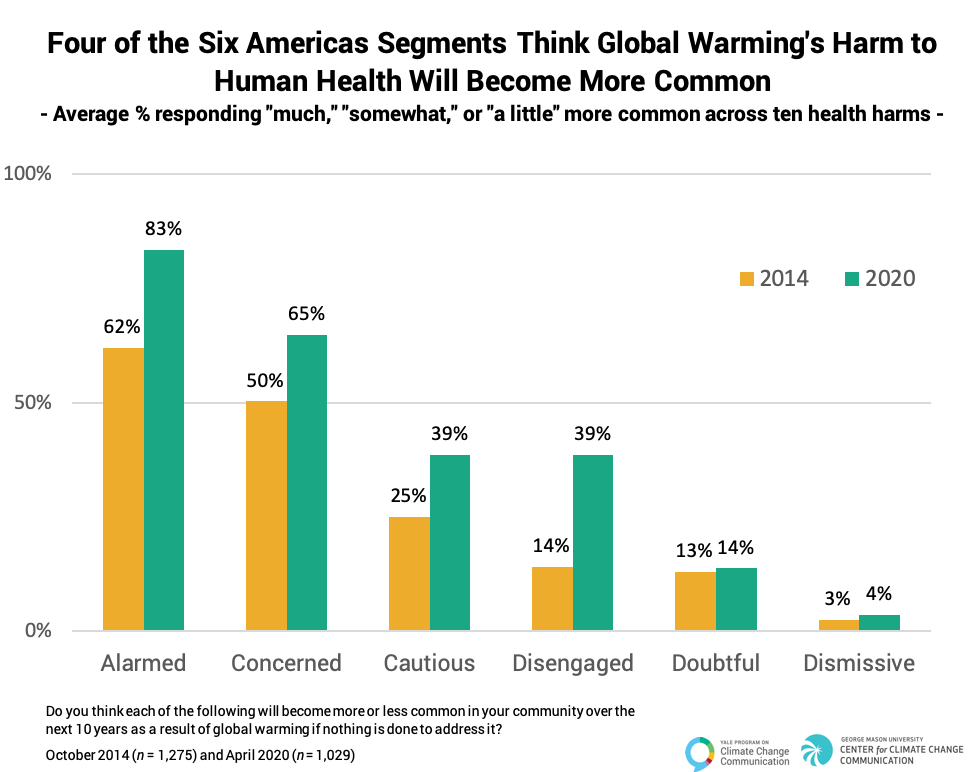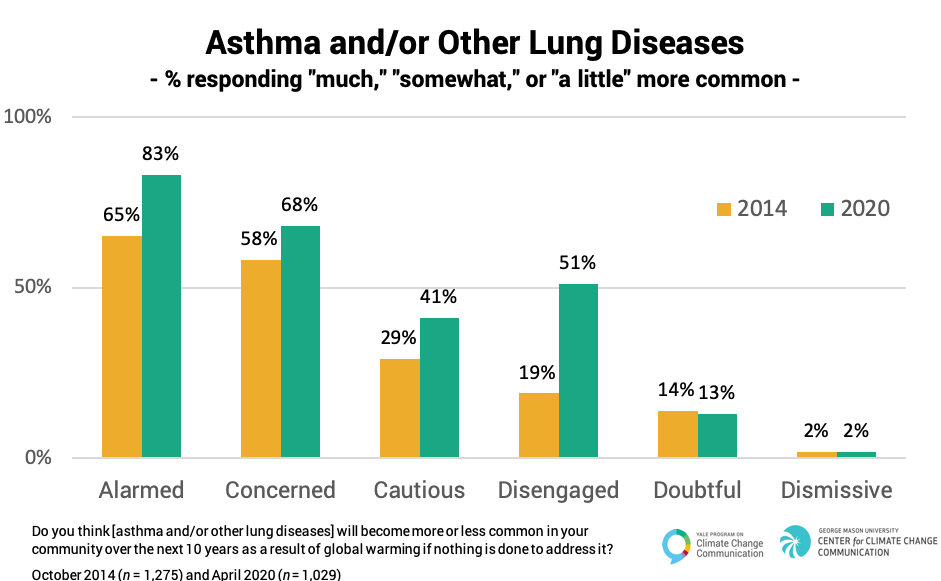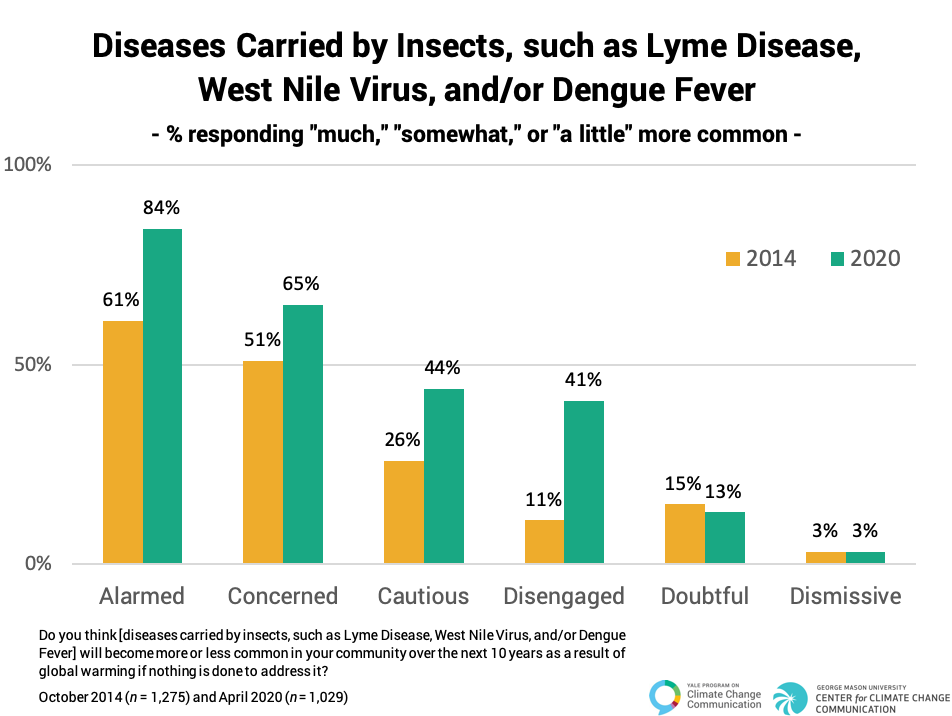Climate Note · Mar 30, 2021
Understanding the health harms of climate change: A Six Americas analysis
By Connie Roser-Renouf, Edward Maibach, Anthony Leiserowitz, Seth Rosenthal and John Kotcher
Filed under: Climate Impacts and Audiences

Through our research on Americans’ beliefs and attitudes about climate change, we have identified six distinct audiences, ranging on a spectrum from the Alarmed, who understand the threat of climate change and are very worried about it, to the Dismissive, who do not think climate change is real and are likely to believe it is a hoax.
Between 2014 and 2020, the proportion of the U.S. population that is Alarmed about climate change more than doubled. In April, 2020, over half of all American adults were in one of the two most worried segments, the Alarmed (26%) and Concerned (28%).
This growing concern about climate change has been accompanied by an increasing understanding that climate change harms humans.
In 2014, we asked questions about ten different health harms associated with global warming, and found that few Americans – even among the Alarmed and Concerned segments – understood the impacts of climate change on human health (Roser-Renouf et al., 2015). In 2020, we asked those questions again, and the changes were striking: there were large increases in Americans’ recognition of the health harms caused by climate change (Kotcher et al., 2020). For example, in 2014, 34% of Americans expected increases in bodily harm due to severe storms and hurricanes over the coming decade; in 2020, the proportion was 57% – an increase of 23 percentage points. Substantial increases were also found in public risk perceptions of the health consequences of many other climate change impacts.
To assess which Americans are growing more aware of climate change health threats, we looked at the changes within each of the Six Americas. The Alarmed and Concerned became more aware of these health harms, but so too did the Cautious and Disengaged – two audience segments that are not highly engaged with the issue. Only the Doubtful and Dismissive – segments that are skeptical of the reality and threat of climate change – showed little or no change.
For example, the proportion of the Alarmed who expect injuries from severe storms and hurricanes to increase over the coming decade grew by 27 percentage points between 2014 and 2020, from 62% to 89%. Among the Concerned, the increase was 17 points, among the Cautious, 20 points, and among the Disengaged 28 points.
Even larger changes are apparent in Americans’ understanding of the harm caused by wildfires: The proportion of the population overall that expects increased harm from wildfires more than doubled, from 26% to 54% (a 28-point increase). More than eight in ten Alarmed Americans expect harm from wildfires to increase over the coming decade, an increase of 35 percentage points. Among the Concerned, the Cautious and the Disengaged, harm perceptions increased 22 points, 26 points, and 34 points, respectively.
Increases in perceived harm from asthma and other lung diseases, and from diseases carried by insects show similar patterns.
Averaging across all ten measures of perceived health risks, the Alarmed were 21 percentage points higher in 2020 than in 2014. The Concerned were 15 points higher, the Cautious were 14 points higher, and the Disengaged were 25 points higher. Risk perceptions among the Doubtful and Dismissive, by contrast, did not shift.
 Figure shows the proportions in each segment that expect health harms from global warming to increase over the coming decade, averaged across ten health harms: heat stroke caused by extreme heat waves; bodily harm from severe storms &/or hurricanes; bodily harm from wildfires; asthma &/or lung diseases; diseases carried by insects, such as Lyme Disease, West Nile virus, &/or dengue fever; illness caused by food &/or water containing harmful bacteria or viruses; bodily harm from flooding; pollen-related allergies; depression; and severe anxiety.
Figure shows the proportions in each segment that expect health harms from global warming to increase over the coming decade, averaged across ten health harms: heat stroke caused by extreme heat waves; bodily harm from severe storms &/or hurricanes; bodily harm from wildfires; asthma &/or lung diseases; diseases carried by insects, such as Lyme Disease, West Nile virus, &/or dengue fever; illness caused by food &/or water containing harmful bacteria or viruses; bodily harm from flooding; pollen-related allergies; depression; and severe anxiety.
Overall, risk perceptions about health harms from global warming increased over a six-year time period among members of all but the two most skeptical segments of the population. It is perhaps surprising that the two segments distinguished by their low concern about the issue – the Cautious and Disengaged – both increasingly understand the health harms global warming causes to humans, although their overall engagement with the issue – as evidenced by their segment membership – has remained low. It is possible that this growing awareness of health harm is a leading indicator, with deeper issue engagement to follow.





